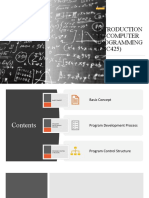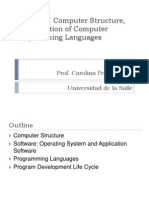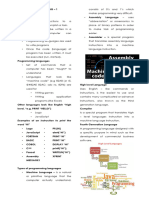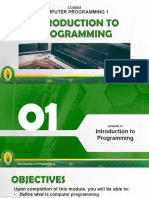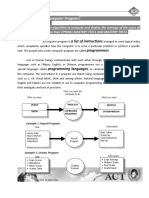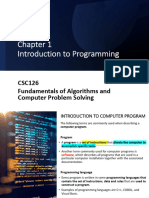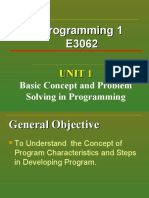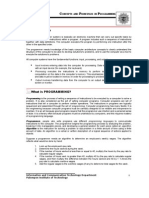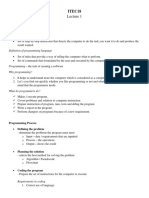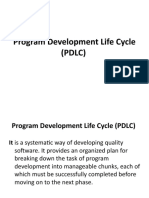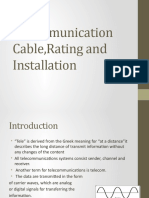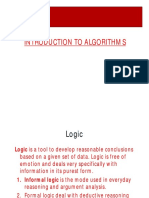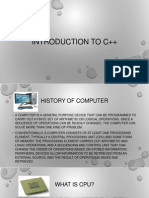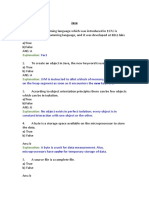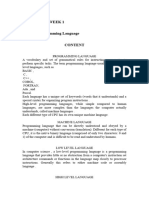0% found this document useful (0 votes)
199 views49 pagesCSC425 Topic 1 Introduction
This document provides an introduction to the course Introduction to Computer Programming (CSC425). It discusses basic concepts such as computer programming, program development process, and program control structures. The basic concepts section defines terms like programmer, programming language, compiler, and algorithm. It also explains machine language, assembly language, and high-level languages. The program development process section outlines the typical steps of problem analysis, program design, coding, testing, and documentation.
Uploaded by
Syahmi FadziCopyright
© © All Rights Reserved
We take content rights seriously. If you suspect this is your content, claim it here.
Available Formats
Download as PDF, TXT or read online on Scribd
0% found this document useful (0 votes)
199 views49 pagesCSC425 Topic 1 Introduction
This document provides an introduction to the course Introduction to Computer Programming (CSC425). It discusses basic concepts such as computer programming, program development process, and program control structures. The basic concepts section defines terms like programmer, programming language, compiler, and algorithm. It also explains machine language, assembly language, and high-level languages. The program development process section outlines the typical steps of problem analysis, program design, coding, testing, and documentation.
Uploaded by
Syahmi FadziCopyright
© © All Rights Reserved
We take content rights seriously. If you suspect this is your content, claim it here.
Available Formats
Download as PDF, TXT or read online on Scribd
/ 49



